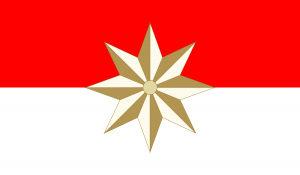Difference between revisions of "Language/Sundanese/Vocabulary/Express-Surprise"
m (Quick edit) |
|||
| (3 intermediate revisions by the same user not shown) | |||
| Line 3: | Line 3: | ||
<div class="pg_page_title">Sundanese Vocabulary - Express Surprise</div> | <div class="pg_page_title">Sundanese Vocabulary - Express Surprise</div> | ||
Hi [https://polyglotclub.com/language/sundanese Sundanese] learners! 😊<br>In this lesson, we will focus on expressing surprise in Sundanese language. We will also learn some cultural facts and interesting information related to Sundanese culture. To improve your [[Language/Sundanese|Sundanese]] [[Language/Sundanese/Vocabulary|Vocabulary]], you can also use the [https://polyglotclub.com Polyglot Club] website. [https://polyglotclub.com/find-friends.php?search=send&d=0&f=36&offre1=6482 Find native speakers] and ask them any [https://polyglotclub.com/language/sundanese/question questions]! Don't hesitate to ask questions and leave a comment below! 😃<br><br> | |||
__TOC__ | |||
! Sundanese | == Cultural Facts == | ||
Sundanese is an Austronesian language spoken by around 39 million people, mainly in West Java, Indonesia. Sundanese people have a rich cultural heritage and are proud of their traditional arts, music, and dances. Sundanese culture is also famous for its food, especially for its spicy and savory dishes. | |||
In Sundanese culture, respect for elders is highly valued. Younger people are expected to address their elders in a polite and formal way. It is also common for Sundanese people to express their feelings indirectly, with metaphors. | |||
== Vocabulary == | |||
Here is a list of Sundanese expressions to show surprise to use in different situations: | |||
{| class="wikitable" | {| class="wikitable" | ||
! Sundanese !! Pronunciation !! English | |||
|- | |- | ||
! | |Heh!! || /hɛh/ || Wow! | ||
|- | |- | ||
| | |Luhuuhh! || /luhu:h/ || Oh, No way! | ||
|- | |- | ||
| | |Bengak! || /bəŋak/ || Really? | ||
|- | |- | ||
| | |Genagan! || /gənaɡan/ || For real? | ||
|- | |- | ||
| | |Kulpih! || /kulpɪh/ || No kidding! | ||
| | |||
| | |||
|} | |} | ||
Example dialogue: | |||
* Person 1: Heh!! Saha nami kaaya? (/hɛh!! saha nami ka.aja?/) (Wow! Who are you?) | |||
* Person 2: Abas, kasunatan abdi. (/abas, kasunatan abdi./) (Abas, I'm your neighbor.) | |||
== Interesting Fact == | |||
Did you know that Sundanese music is an essential part of Sundanese culture? The traditional music genre, called gamelan Degung, is often played in traditional ceremonies and events. The ensemble consists of drums, xylophones, bamboo flutes, and stringed instruments. The gamelan Degung is also often used to accompany traditional dances. | |||
<span class='maj'></span> | |||
==Sources== | |||
* [https://polyglotclub.com/wiki/Language/Sundanese/Vocabulary/Express-Surprise Sundanese Vocabulary - Express Surprise] | |||
* [https://polyglotclub.com/wiki/Language/Sundanese/Vocabulary/Feelings-and-Emotions Sundanese Vocabulary - Feelings and Emotions] | |||
<hr>➡ If you have any questions, please ask them in the comments section below.<br>➡ Feel free to edit this wiki page if you think it can be improved. 😎 | |||
{{#seo: | {{#seo: | ||
|title=Express Surprise | |title=Sundanese Vocabulary - Express Surprise | ||
|keywords= | |keywords=Sundanese, surprise, culture, gamelan Degung | ||
|description= | |description=Learn Sundanese expressions to show surprise, as well as interesting cultural facts about Sundanese people and their traditional music. | ||
}} | }} | ||
==Other Lessons== | |||
* [[Language/Sundanese/Vocabulary/Drinks|Drinks]] | |||
* [[Language/Sundanese/Vocabulary/Count-to-10|Count to 10]] | |||
== | * [[Language/Sundanese/Vocabulary/Animals|Animals]] | ||
* [[Language/Sundanese/Vocabulary/Geography|Geography]] | * [[Language/Sundanese/Vocabulary/Geography|Geography]] | ||
* [[Language/Sundanese/Vocabulary/Feelings-and-Emotions|Feelings and Emotions]] | * [[Language/Sundanese/Vocabulary/Feelings-and-Emotions|Feelings and Emotions]] | ||
* [[Language/Sundanese/Vocabulary/Family|Family]] | |||
* [[Language/Sundanese/Vocabulary/How-to-Say-Hello-and-Greetings|How to Say Hello and Greetings]] | * [[Language/Sundanese/Vocabulary/How-to-Say-Hello-and-Greetings|How to Say Hello and Greetings]] | ||
* [[Language/Sundanese/Vocabulary/Health|Health]] | * [[Language/Sundanese/Vocabulary/Health|Health]] | ||
* [[Language/Sundanese/Vocabulary/ | * [[Language/Sundanese/Vocabulary/Colors|Colors]] | ||
* [[Language/Sundanese/Vocabulary/Days-of-the-Week|Days of the Week]] | |||
{{Sundanese-Page-Bottom}} | {{Sundanese-Page-Bottom}} | ||
<span links></span> | |||
Latest revision as of 22:06, 27 March 2023
Hi Sundanese learners! 😊
In this lesson, we will focus on expressing surprise in Sundanese language. We will also learn some cultural facts and interesting information related to Sundanese culture. To improve your Sundanese Vocabulary, you can also use the Polyglot Club website. Find native speakers and ask them any questions! Don't hesitate to ask questions and leave a comment below! 😃
Cultural Facts[edit | edit source]
Sundanese is an Austronesian language spoken by around 39 million people, mainly in West Java, Indonesia. Sundanese people have a rich cultural heritage and are proud of their traditional arts, music, and dances. Sundanese culture is also famous for its food, especially for its spicy and savory dishes.
In Sundanese culture, respect for elders is highly valued. Younger people are expected to address their elders in a polite and formal way. It is also common for Sundanese people to express their feelings indirectly, with metaphors.
Vocabulary[edit | edit source]
Here is a list of Sundanese expressions to show surprise to use in different situations:
| Sundanese | Pronunciation | English |
|---|---|---|
| Heh!! | /hɛh/ | Wow! |
| Luhuuhh! | /luhu:h/ | Oh, No way! |
| Bengak! | /bəŋak/ | Really? |
| Genagan! | /gənaɡan/ | For real? |
| Kulpih! | /kulpɪh/ | No kidding! |
Example dialogue:
- Person 1: Heh!! Saha nami kaaya? (/hɛh!! saha nami ka.aja?/) (Wow! Who are you?)
- Person 2: Abas, kasunatan abdi. (/abas, kasunatan abdi./) (Abas, I'm your neighbor.)
Interesting Fact[edit | edit source]
Did you know that Sundanese music is an essential part of Sundanese culture? The traditional music genre, called gamelan Degung, is often played in traditional ceremonies and events. The ensemble consists of drums, xylophones, bamboo flutes, and stringed instruments. The gamelan Degung is also often used to accompany traditional dances.
Sources[edit | edit source]
➡ If you have any questions, please ask them in the comments section below.
➡ Feel free to edit this wiki page if you think it can be improved. 😎
